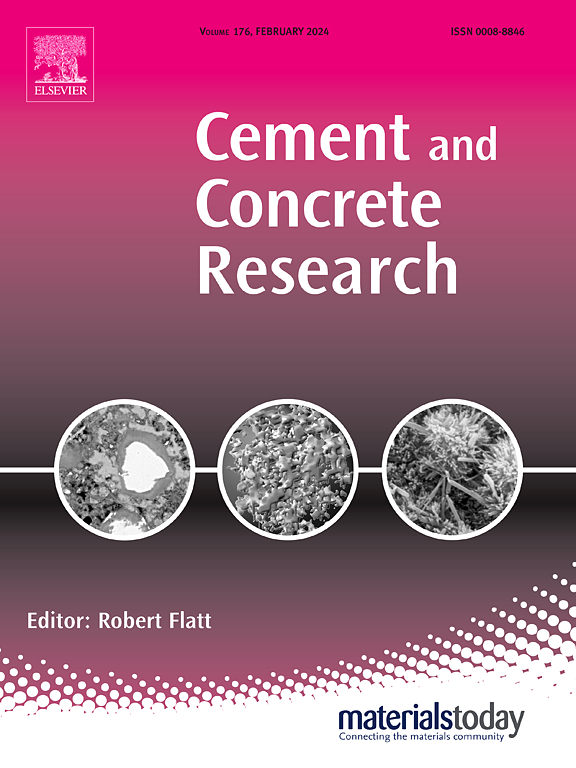Deciphering tensile fatigue behavior of UHPFRC using magnetoscopy, DIC and acoustic emission
IF 10.9
1区 工程技术
Q1 CONSTRUCTION & BUILDING TECHNOLOGY
引用次数: 0
Abstract
To explore the governing mechanism underlying the tensile fatigue behavior of Ultra-high Performance Fiber Reinforced Cementitious Composites (UHPFRC), this study tested eight specimens using four advanced non-destructive measurement techniques. First, magnetoscopy is conducted on each specimen to determine the local fiber orientation and volume. Afterward, seven specimens are statically preloaded to the tensile strain of 1.5 ‰, identified as the typical maximum strain of UHPFRC in structural applications; while one specimen to the strain of 0.19 ‰, within the tensile elastic domain. During testing, the specimen response is monitored using digital image correlation and acoustic emission, in addition to displacement transducers. All specimens show similar evolution of fatigue deformation, characterized by three development stages. It is found that the local fiber orientation governs the fatigue deformation behavior. Fatigue deformation concentrates in low fiber orientation zones and fatigue fracture always occurs at the zone with lowest fiber orientation coefficients. The acoustic emission measurement, represented by cumulative energy curve and Ib-values, can appropriately characterize specimen damage degree and distinguish cracking patterns.
利用磁镜、DIC和声发射分析UHPFRC的拉伸疲劳行为
为了探索超高性能纤维增强胶凝复合材料(UHPFRC)拉伸疲劳行为的控制机制,本研究使用四种先进的无损测量技术对8个试样进行了测试。首先,对每个样品进行磁镜检查,以确定局部纤维的方向和体积。随后,将7个试件静预加载至拉伸应变1.5‰,确定为UHPFRC在结构应用中的典型最大应变;而一个试件的应变为0.19‰,在拉伸弹性范围内。在测试过程中,除了位移传感器外,还使用数字图像相关和声发射来监测试样的响应。所有试件均表现出相似的疲劳变形演化特征,均表现为三个发展阶段。结果表明,局部纤维取向决定了材料的疲劳变形行为。疲劳变形集中在纤维取向系数低的区域,疲劳断裂主要发生在纤维取向系数最低的区域。声发射测量以累积能量曲线和ib值为代表,能较好地表征试样的损伤程度和区分裂纹模式。
本文章由计算机程序翻译,如有差异,请以英文原文为准。
求助全文
约1分钟内获得全文
求助全文
来源期刊

Cement and Concrete Research
工程技术-材料科学:综合
CiteScore
20.90
自引率
12.30%
发文量
318
审稿时长
53 days
期刊介绍:
Cement and Concrete Research is dedicated to publishing top-notch research on the materials science and engineering of cement, cement composites, mortars, concrete, and related materials incorporating cement or other mineral binders. The journal prioritizes reporting significant findings in research on the properties and performance of cementitious materials. It also covers novel experimental techniques, the latest analytical and modeling methods, examination and diagnosis of actual cement and concrete structures, and the exploration of potential improvements in materials.
 求助内容:
求助内容: 应助结果提醒方式:
应助结果提醒方式:


